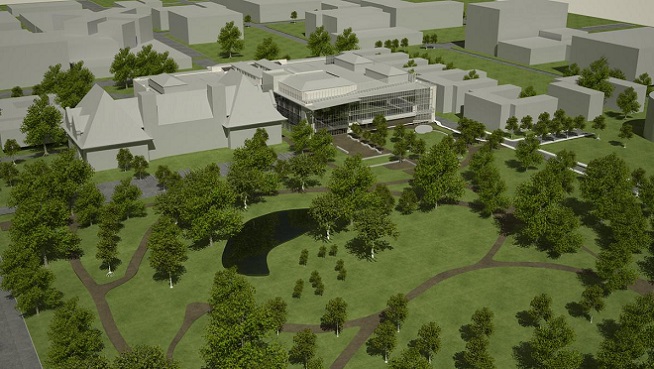
COLUMBUS—The desire of so many millennials to live in or near a true downtown has municipal leaders across the US brainstorming how they can make core areas more attractive and livable. Few cities have done as much as Columbus, and it recently launched yet another of these efforts, this time to create a full-fledged cultural district just east of downtown that will strengthen the many new residents' attachment to the community.
Thanks to a $173 million facelift, the neighborhood, now dubbed the Discovery District, will soon have new multifamily developments, retail and office space that stiches together the many local cultural attractions such as the Main Library, the Columbus Museum of Art, Thurber House, and Topiary Park.
“Like a lot of cities, we have a downtown that was for the most part created at the same time the freeways were built,” Amy Taylor, chief operating officer of the Columbus Downtown Development Corp., tells GlobeSt.com. The chief goal in the past was to help office workers get out of the downtown area as quickly and efficiently as possible. And in the second half of the last century, they left in droves. “Downtown went out of fashion.”
Taylor estimates that about 30,000 people lived downtown in 1950, buy by 2000 only about 3,000 were left. Other experts said in 2016 that the downtown population was about to surpass 8,000. More than 44% of these residents are 20 to 34 years old. They “want to live where they make their living.”

The creation of the Discovery District complements the transformation of the nearby riverfront. In 2014, the city removed the Main Street Dam, which stopped the Scioto River from flowing freely through the city center, opening up a vast amount of new land as the river narrowed. The city then transformed it into a 33-acre park called Scioto Greenways, and joined it to another 145 acres along the river called the Scioto Mile, giving the downtown a new park-like atmosphere.
The city outlined its riverfront proposals in 2010, and then proposed creating the Discovery District. A key component of the plan called for replacing with new residential buildings the parking lots that separated several top cultural attractions. That way, the library and museum would be directly connected to the existing jewel of Topiary Park. “It's a nice way to leverage the neighborhood's existing assets,” Taylor says.
Plans for the $20 million Library Park Apartments include building a pair of five-story buildings with more than 130 apartments and ground retail space. A six-story mixed-use development called Borror State Street project will not only add to the growing residential unit count, but also offer about 15,000 square feet of ground floor retail and commercial space. And the city's Downtown Commission recently approved the first building for the $28 million Motorists Development, a planned five-story apartment complex. The first phase will include 91 units of “London- or New York-style” brownstones, with overall plans calling for 256 units.
Other neighborhood amenities have been established. The brewhouse Platform Beer Co. now offers a tasting room and patio, and Roosevelt Coffeehouse, a nonprofit coffeehouse with a charitable mission serving artisan-roasted espresso and pastries, also just opened for business.
“This district already had a lot going for it,” Taylor says, “we just needed to make the connections.”
Want to continue reading?
Become a Free ALM Digital Reader.
Once you are an ALM Digital Member, you’ll receive:
- Breaking commercial real estate news and analysis, on-site and via our newsletters and custom alerts
- Educational webcasts, white papers, and ebooks from industry thought leaders
- Critical coverage of the property casualty insurance and financial advisory markets on our other ALM sites, PropertyCasualty360 and ThinkAdvisor
Already have an account? Sign In Now
*May exclude premium content© 2025 ALM Global, LLC, All Rights Reserved. Request academic re-use from www.copyright.com. All other uses, submit a request to [email protected]. For more information visit Asset & Logo Licensing.








